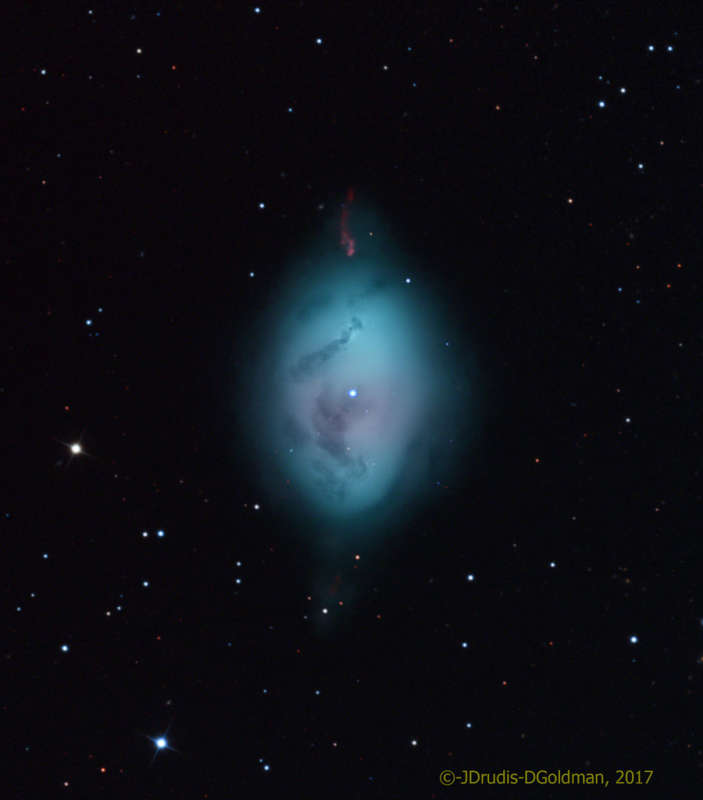
|
Credit & Copyright: Josep Drudis,
Don Goldman
Explanation:
This
pretty cosmic cloud lies some 1,500 light-years away,
it shape and color reminiscent of a blue robin's egg.
It spans about 3 light-years, nested securely within the
boundaries of the southern constellation Fornax.
Recognized as
a planetary nebula it doesn't represent a beginning
though, but instead corresponds to a brief and final phase in the
evolution of an
aging star.
In fact,
visible in the telescopic image the central star of NGC 1360
is known to be a binary star system likely consisting of two
evolved white dwarf stars, less massive but much hotter than the Sun.
Their intense and otherwise invisible ultraviolet radiation has
stripped away electrons from the atoms in the surrounding gaseous shroud.
The predominant blue-green hue of NGC 1360 seen here is the
strong emission produced as electrons recombine with
doubly ionized oxygen atoms.
|
January February March April May June July August September October November December |
| ||||||||||||||||||||||||||||||||||||||||||||||||
NASA Web Site Statements, Warnings, and Disclaimers
NASA Official: Jay Norris. Specific rights apply.
A service of: LHEA at NASA / GSFC
& Michigan Tech. U.
Based on Astronomy Picture
Of the Day
Publications with keywords: planetary nebula
Publications with words: planetary nebula
See also:
- APOD: 2025 July 29 Á A Helix Nebula Deep Field
- APOD: 2025 July 13 Á Planetary Nebula Mz3: The Ant Nebula
- APOD: 2025 June 9 Á Between Scylla and Charybdis: A Double Cosmic Discovery
- APOD: 2025 May 14 Á NGC 1360: The Robins Egg Nebula
- APOD: 2025 April 27 Á IC 418: The Spirograph Nebula
- APOD: 2025 April 15 Á Planetary Nebula NGC 1514 from Webb
- Planetary Nebula Abell 7
